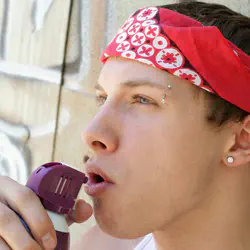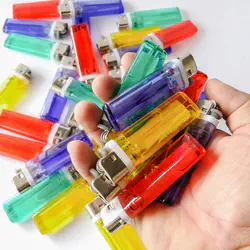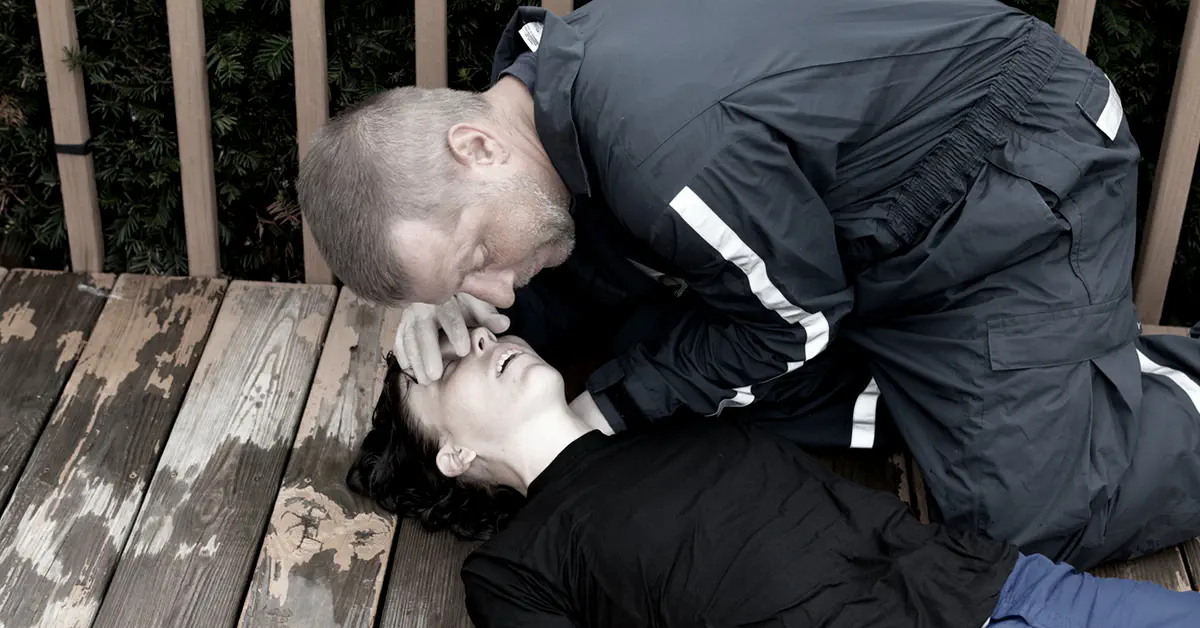DRUGS: WHAT YOU
NEED TO KNOW Booklet

Signs and Symptoms of Inhalant Use

Inhalants may be one of the most insidious of all illicit drugs because they are so readily available. For that reason, they are used more frequently by youth than adults.
A young person who wants to experiment with drugs may find it hard to acquire marijuana or pills. But inhalants are probably stored in the kitchen, bathroom or garage of their home. Perhaps even their bedroom.
The number of people abusing inhalants every year is roughly the same as the number abusing methamphetamine: 2.4 million. And every month, just under a million people reach for spray paint, gasoline, hair spray or even markers for the high they can produce.1
The pattern of inhalant abuse is highest among those aged 12 to 17. This is true for no other type of substance abuse. Each year, 2.7% of these youth use an inhalant for its intoxicating properties. Of those aged 18 to 25, 1.5% use an inhalant every month. Among those who are older, only one-half of one percent do so.
Along with youth, other people prone to inhalant addiction are the poor, the mentally ill and those in the criminal justice system.2

The Monitoring the Future Survey of Students
The 2021 Monitoring the Future survey of 8th, 10th and 12th-grade students provides more insight into the use of inhalants by youth. In this survey as well, the younger the student, the greater the incidence of inhalant abuse and addiction.3
This survey found that 2.9% of 8th, 10th and 12th-grade students had used an inhalant in the past year. This was a decline from a high of 10.9% in 1995. But in their lifetimes, nearly 8% of these students had misused one of these substances.
The Monitoring the Future survey also provides numbers for each grade surveyed. In 2021, 1.8% of high school seniors, 2% of high school sophomores and nearly 5% of 8th-grade students had engaged in this dangerous habit.
Types of Inhalants That Can Be Abused
Many parents don’t realize the number of items around the home that can produce a high—a very dangerous high since it’s possible for inhalant abuse and addiction to be fatal on the very first try.

This is just a partial list:
- Some types of glue
- Spray paints
- Gasoline
- Propane
- Butane
- Whipped cream dispensers
- Hair spray
- Nail polish and polish remover
- Markers
- Computer cleaner sprays
- Vegetable cooking spray
- Fabric protector sprays
- Deodorant sprays
- Amyl nitrate “poppers”
The typical home could have dozens of these abusable substances readily available to any young person.
Physical Signs of Inhalant Addiction
Inhalants act like anesthetics, slowing a person’s thinking and bodily functions. The intoxication that results can show up as signs like these:

- Muscle weakness
- Dizziness
- Lightheadedness
- Rapid heartbeat
- Slurred speech
- Headache
- Poor physical coordination
- Nausea
- Vomiting
- Loss of physical sensation
- Unconsciousness
- Drowsiness
The most horrific physical sign of inhalant addiction is sudden sniffing death. The most likely substances that can cause sudden sniffing death are butane, propane and aerosol products. Sudden sniffing death can occur the first time a person consumes an inhalant.4
It may be possible to detect inhalant addiction by seeing or smelling signs left behind after their consumption. For example:
- Chemical odors on breath or clothing
- Empty or used-up paint cans, solvent containers, markers and so on
- Paint on face, hands or clothes
- Plastic bags used for inhaling that are stained with chemicals or paint
- Chemical-soaked rags
- Balloons that have been inflated and deflated
Behavioral and Emotional Signs of Inhalant Addiction
Inhalant users are looking for a state of intoxication which can resemble drunkenness. But along with that may come:
- Euphoria
- Apathy
- Impaired judgment
- Belligerence
- Giddiness
- Hallucinations
- Delusions
- Impaired functioning at work or school
It is also common for a person who has been using inhalants for a while to lose their inhibitions and feel less in control.
The Long-Term Physical Damage of Inhalant Addiction
These toxic substances can cause serious and lasting damage. At first, these signs may be seen:
- Weight loss
- Muscle weakness
- Lack of coordination
- Reduced immunity
The long-range harm that can occur includes:
- Brain damage
- Nerve damage similar to the symptoms of multiple sclerosis
- Damage to heart, lungs, liver and kidneys
- Impaired vision or hearing
- Heart failure
The Long-Term Emotional and Mental Damage of Inhalant Addiction
If a person continues to use inhalants, they can manifest disorientation, inattentiveness, irritability and depression. One of the most significant effects is a compulsive need to continue to use inhalants.
Inhalant Overdoses

When too much of an inhalant is consumed, the symptoms can be serious or life-ending.
- Asphyxiation
- Suffocation
- Seizures
- Coma
- Choking on one’s own vomit
- Sudden sniffing death
- Accidental death while intoxicated
Withdrawal from Inhalant Addiction
When a person tries to stop using inhalants after chronic use, the cravings are likely to make it difficult. Close support is needed to help a person get through this time period of withdrawal.
In addition, withdrawal may be accompanied by these symptoms.2
- Irritability
- Headaches
- Nausea
- Hallucinations
- Depressed mood
- Anxiety
- Fast heartbeat
- Insomnia
- Restlessness
Withdrawal from certain solvents can cause convulsions.
Returning to Sobriety
The belligerence, delusions and loss of judgment can make it very difficult for a family to get a loved one off inhalants and into rehab. A professional interventionist may be needed to overcome the addicted person’s resistance to recovery.
Any work needed to get a person addicted to inhalants into rehab is worth the effort. A person addicted to inhalants is flirting with disaster every time they pick up a can or bottle of these toxic substances.
Sources:
-
SAMHSA. “Key Substance Use and Mental Health Indicators in the United States: Results from the 2020 National Survey on Drug Use and Health.” Substance Abuse and Mental Health, 2021. SAMHSA.gov Publication ↩︎
-
NIH. “Inhalant Withdrawal as a Clinically Significant Feature of Inhalant Dependence Disorder.” National Institutes of Health, 2009. NIH Article ↩︎ ↩︎
-
MTF. “Monitoring the Future National Survey Results on Drug Use, 1975-2021.” Monitoring the Future, 2022. MTF.org Publication ↩︎
-
NIDA. ”NIDA Community Drug Alert Bulletin - Inhalants.” NIDA, 2005. NIDA article ↩︎


 ®
®
